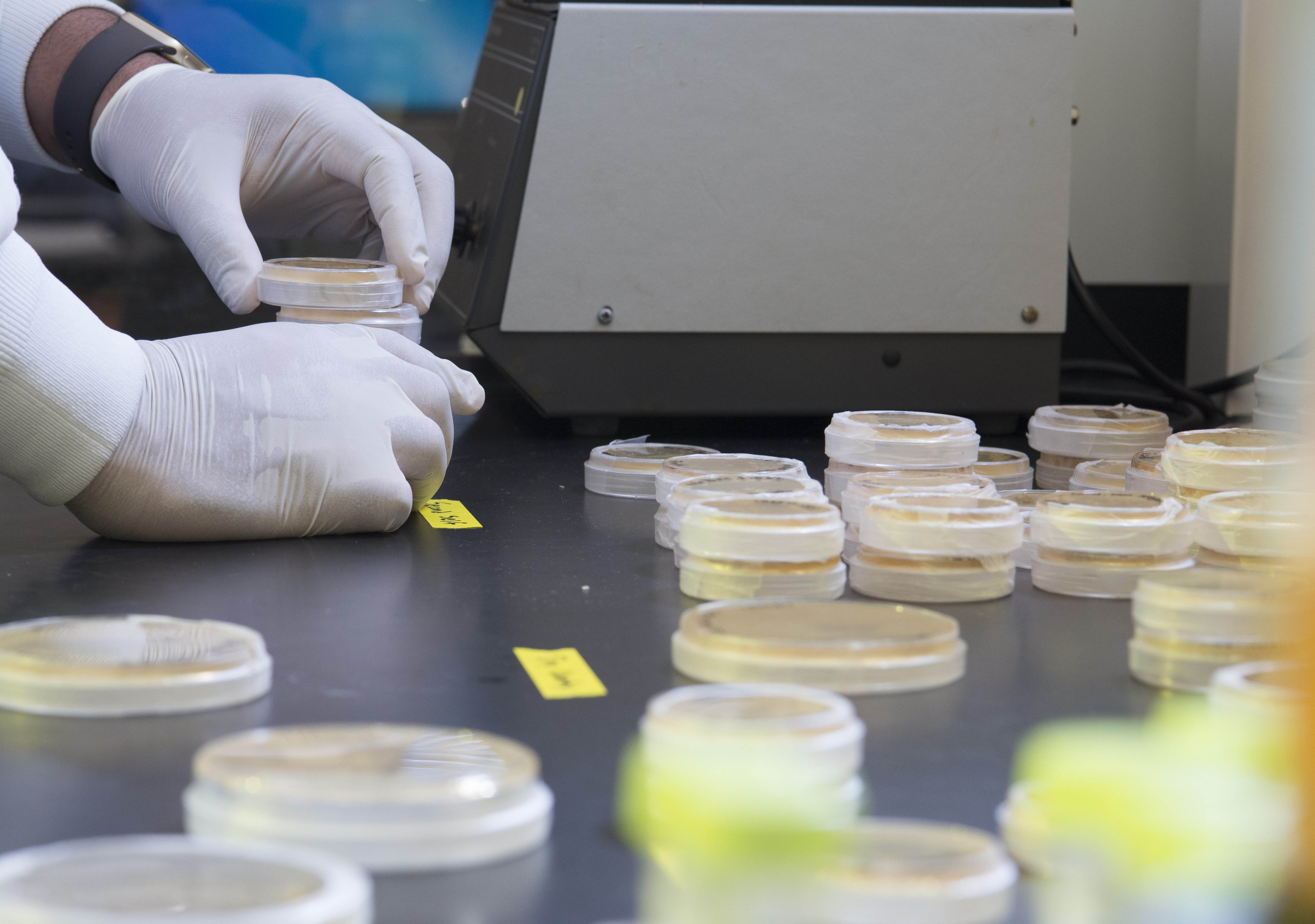Biohazards
Biohazardous research deals with materials of biological origin that have the capacity
to produce hazardous  effects on humans or animals. The Centers for Disease Control and Prevention defines
biohazardous material as "infectious agents or hazardous biologic materials that present
a risk or potential risk to the health of humans, animals, or the environment. The
risk can be direct through infection or indirect through damage to the environment.
Biohazardous materials include certain types of recombinant DNA, organisms and viruses
infectious to humans, animals, or plants (e.g., parasites, viruses, bacteria, fungi,
prions, and rickettsia), and biologically active agents (e.g., toxins, allergens,
and venoms) that can cause disease in other living organisms or cause significant
impact to the environment or community."
effects on humans or animals. The Centers for Disease Control and Prevention defines
biohazardous material as "infectious agents or hazardous biologic materials that present
a risk or potential risk to the health of humans, animals, or the environment. The
risk can be direct through infection or indirect through damage to the environment.
Biohazardous materials include certain types of recombinant DNA, organisms and viruses
infectious to humans, animals, or plants (e.g., parasites, viruses, bacteria, fungi,
prions, and rickettsia), and biologically active agents (e.g., toxins, allergens,
and venoms) that can cause disease in other living organisms or cause significant
impact to the environment or community."
There are four levels of biohazard safety. Biosafety level 1 (BSL1) is appropriate for work with organisms that are not known to cause diseases. Biosafety level 2 (BLS2) represents work with organisms that cause a modest risk, such as the virus that causes the common cold. Biosafety level 3 (BSL-3) is the designation for work with organisms which cause serious disease but for which vaccines or antibiotics are available, such as rabies or Rocky Mountain spotted fever. Biosafety level 4 (BSL4) is reserved for work with organisms that pose a high risk of transmission of life-threatening disease and for which no vaccines or antibiotics are available.
Questions and comments should be directed to the Laboratory Safety Manager/Biosafety Officer, Rodrick Esaw, MPH, CSP, via email at resaw@kennesaw.edu or by phone at 470-578-4803.











